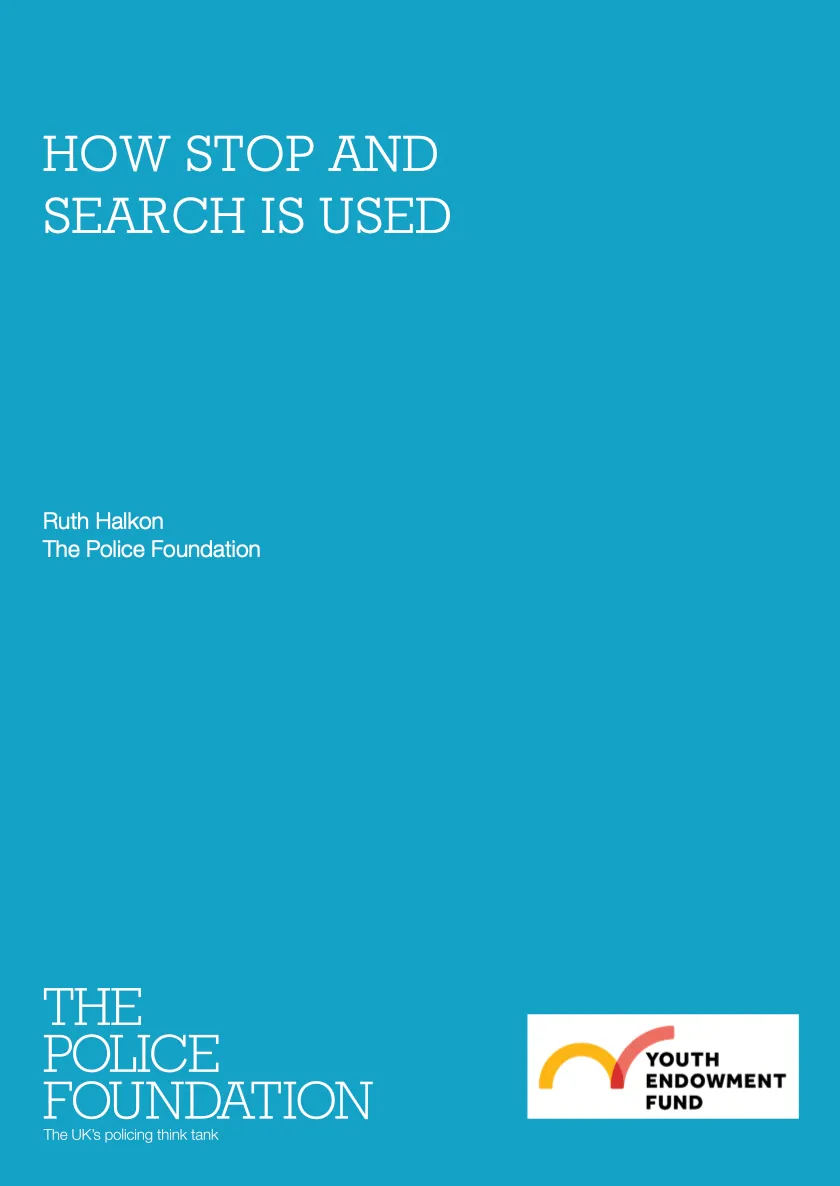
Prevalence of the use of stop and search in England and Wales
Last year 547,002 stop and searches were conducted by the police in England and Wales, of which 542,722 were section 1 PACE searches.
The majority of PACE stop and searches are for drugs rather than weapons: around 15% are under suspicion of weapons carrying, while around 60% are under suspicion of carrying drugs.
Relatively few searches find weapons, only 3% of all searches. This rises to 11% of stop and searches where officers have information or intelligence that a person might be carrying a weapon.
Most searches do not lead to an arrest or caution. 14% result in an arrest, and 8% result in a community resolution. Arrests fall to 10% for children.
1 in 5 (21%) of stop and searches are conducted on children aged 10 to 17. Around one-third of these are for weapons.
Most children who are stopped and searched are boys (90%). Searches of under 10s are very rare, only 64 were undertaken last year.
When searches take place under a Section 60, arrests are less common. 5% of stop and search under Section 60 led to an arrest, compared to 14% under PACE. Last year, 4,280 stop and searches were carried out under Section 60.
Is it effective?
On average, based on international research, stop and search is likely to have a moderate impact on violent crime. Research undertaken in the UK suggests that stop and search is likely to have a low impact on violent crime.
A review of international studies estimates that, on average, stop and search has reduced crime by 13%. Seven of the nine studies that informed this estimate were undertaken in the US. Two studies were undertaken in the UK, and they estimate that stop and search reduced crime by 5%.
The review also found that, on average, the use of stop and search reduced crime in neighbouring areas by 7%. However, it is important to note potential harms associated with stop and search. People that have experienced stop and search are more likely to hold negative attitudes towards the police, and to have poorer mental and physical health. The research shows higher rates of depression, anxiety, Post-Traumatic Stress Disorder (PTSD), suicidal thoughts and sleep problems amongst people that have been stopped and searched, compared to those that have not. The research is not robust enough to confirm whether these negative attitudes, mental or physical health conditions were caused or exacerbated by the stop and search experience, or by other life events and experiences.
One study undertaken in the US, involving 9-15 year olds, collected data over a four-year period and found that being stopped and searched led to an increase in involvement in antisocial behaviour and offending.
Two studies were undertaken in the UK, and they estimate that stop and search reduced crime by 5%.
Racial disproportionality in the use of stop and search
In England and Wales, Black and minority ethnic residents are significantly more likely to be stopped and searched.
In the year 2022/23, Black people were four times more likely to be stopped and searched than white people. Asian people were 1.4 times as likely and mixed ethnicity people were 1.7 times as likely to be stopped and searched compared to white people. Under Section 60, the use of suspicionless stop and search, Black people were seven times more likely to be stopped and searched than white people. A recent report from the Children’s Commissioner (2024) found that Black children in England and Wales were over four times as likely to be strip searched when compared to national population figures, while white children were around half as likely to be strip searched.
Black and minority ethnic residents in England and Wales are also disproportionately more likely to be victims of crime, as well as being arrested, charged, and prosecuted for crime.
The Mayor’s Office for Policing and Crime (MOPAC) surveyed 11,874 young Londoners between the ages of 11 and 16 and found that when controlling for exposure to gang and weapon-related violence, and for being a victim of crime (which made young people more likely to be stopped and searched) there were still increased odds of young Black Londoners being searched than white Londoners.
14% of stop and search conducted on Black or minority ethnic children aged 10 to 17 resulted in arrest, compared to 8% of white children.
Some studies highlight ‘adultification’ as a cause of disproportionately high stop and searches on Black boys under the age of 17. Adultification takes place when adults, or people in positions of power, treat children as less innocent, less vulnerable, and more emotionally resilient than they are. Adultification is driven by discrimination and bias about a child’s personal characteristics or lived experiences. It is likely that Black children are more often subject to adultification and assumed to be engaging in criminal or antisocial behaviour.
How secure is the evidence?
We have moderate confidence in our estimate of the average impact of stop and search on violent crime.
We dropped our confidence in this estimate from high to moderate because it is based on nine studies, and they combine the impacts on children and young people with adults.
We have very low confidence in our estimate of the impact in the UK because this is based on only two studies.